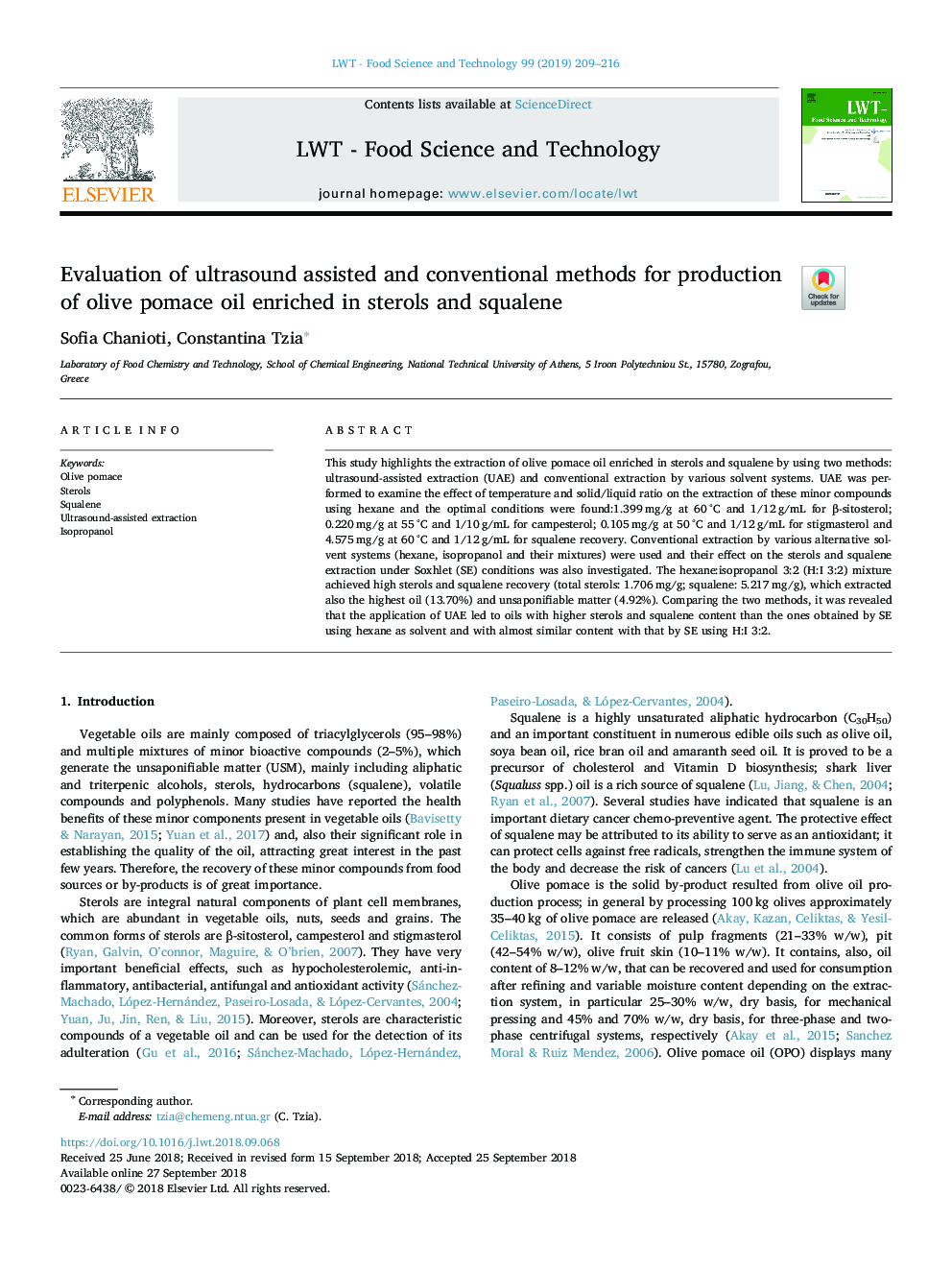| Article ID | Journal | Published Year | Pages | File Type |
|---|---|---|---|---|
| 11024861 | LWT - Food Science and Technology | 2019 | 8 Pages |
Abstract
This study highlights the extraction of olive pomace oil enriched in sterols and squalene by using two methods: ultrasound-assisted extraction (UAE) and conventional extraction by various solvent systems. UAE was performed to examine the effect of temperature and solid/liquid ratio on the extraction of these minor compounds using hexane and the optimal conditions were found:1.399â¯mg/g at 60â¯Â°C and 1/12â¯g/mL for β-sitosterol; 0.220â¯mg/g at 55â¯Â°C and 1/10â¯g/mL for campesterol; 0.105â¯mg/g at 50â¯Â°C and 1/12â¯g/mL for stigmasterol and 4.575â¯mg/g at 60â¯Â°C and 1/12â¯g/mL for squalene recovery. Conventional extraction by various alternative solvent systems (hexane, isopropanol and their mixtures) were used and their effect on the sterols and squalene extraction under Soxhlet (SE) conditions was also investigated. The hexane:isopropanol 3:2 (H:I 3:2) mixture achieved high sterols and squalene recovery (total sterols: 1.706â¯mg/g; squalene: 5.217â¯mg/g), which extracted also the highest oil (13.70%) and unsaponifiable matter (4.92%). Comparing the two methods, it was revealed that the application of UAE led to oils with higher sterols and squalene content than the ones obtained by SE using hexane as solvent and with almost similar content with that by SE using H:I 3:2.
Related Topics
Life Sciences
Agricultural and Biological Sciences
Food Science
Authors
Sofia Chanioti, Constantina Tzia,
